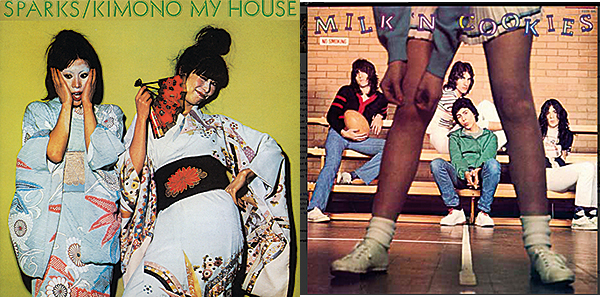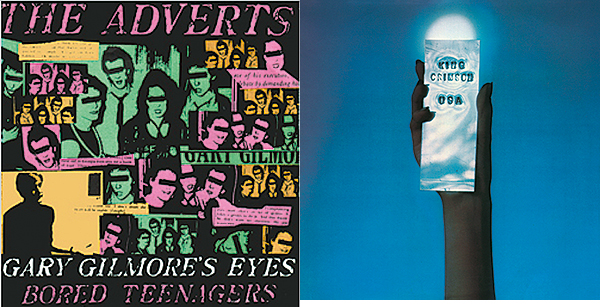Under the covers... Roxy Music De Ville And The Details
Nick De Ville continued to curate Roxy's covers and those of Ferry's solo LPs for the next 30 years, and he also branched out to do some pretty eye-catching work with other artists.

In 1974 he was asked to design the cover for another classic LP, and the results were just as memorable. Sparks' Kimono My House featured two women in traditional Japanese dress [top right] striking curious poses – one with hands to her face apparently in shock, the other fanning her face and winking flirtatiously at the camera. The women were in London with a touring party of Japanese performers, and were keen not to step out of their comfort zone. 'I wanted the two geisha girls to be really doing the kind of things that geisha girls don't do', said De Ville, 'and it was incredibly hard work to get them to do that: to do animated facial expressions. They wanted to be absolutely perfect and stone-faced'.
Other notable work followed, such as the cover for The Adverts' classic early punk single 'Gary Gilmore's Eyes' (1977) with its photos of the band with their eyes covered in black strips [above right]. De Ville was among the first designers to mock the tacky tabloid practice of putting narrow strips over people's eyes, and he collaged them alongside newspaper snippets relating to Gilmore, the American convicted murderer who demanded the right to die saying he'd donate his eyes to science.

Other De Ville sleeves included the cover of New York power pop band Milk 'N Cookies' self-titled debut, which De Ville mocked up in a school gymnasium, with the band looking at the lens through the legs of a cheerleader pulling up her tights. Out of context, it might slightly resemble the kind of sexist nonsense '70s sleeves have become notorious for, but there's an artfulness to the shot that is its saving grace. 'It was the period of The Fonz and Happy Days, De Ville explained. It was a kind of teen movie thing'.
One sleeve that gave him particular satisfaction was King Crimson's 1975 live album USA, for which he managed a similarly clean, minimal, text-light image he'd achieved with Roxy Music. The image of a hand holding up a metal plate [left], partially blocking a bright sun behind it, made for one of the most arresting Crimson covers since their own (daringly text-free) debut LP.


























































